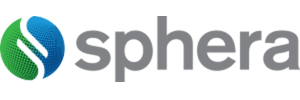Thank You!
Please click the link below to start your download.
Bottom’s Up – SUMI Offers Substantive Changes on Dealing with Mixtures
Please click the link below to start your download.
Bottom’s Up – SUMI Offers Substantive Changes on Dealing with Mixtures
Sphera's integrated Environmental, Social, and Corporate Governance (ESG) solution aims to help companies achieve their sustainability goals. The scalable platform and personalized configuration pave the way for compliance, reporting and performance improvement. It brings together disparate data from systems, sensors, and human-derived activities to provide a normalized, real-time view of ESG performance.
Connect more information and insights across your enterprise with Sphera’s innovative, integrated risk management platform. SpheraCloud® gets the right information to the right people at the right time, but also offers an Integrated Risk Management approach that breaks down information silos.
Enterprise procurement and sustainability leaders aiming for supply chain excellence can rely on Sphera’s comprehensive solution. It provides multifaceted insights, real-time risk monitoring, compliance management, and proactive supplier performance improvement to ensure unparalleled control and resilience across the supply chain.
Industry leaders understand that increasing market pressure from investors, consumers and regulators requires a new approach to sustainability and trust Sphera’s team of consultants to support them with proven experience, technology and data, adapted to meet their unique ESG and sustainability goals.
Use an Integrated Environmental, Social and Governance (ESG) performance and Risk Management approach to break down information silos and empower decision-making with powerful predictive and prescriptive capabilities. Sphera offers SpheraCloud as well as on-premise solutions to meet customers’ needs in the areas of Environment, Health, Safety & Sustainability (EHS&S), Operational Risk Management and Product Stewardship solutions.
Integrate sustainability and risk management throughout the building and construction value chain so you can navigate the challenges posed by climate change, urbanization, resource scarcity and demographic shifts.
Comply with complex regulations and proactively identify, connect and manage risk across the entire life cycle of your chemical and life sciences products, including R&D, engineering, distribution, sales and marketing and production.
Efficiently manage complex environmental regulations for the acquisition, handling and disposal of hazardous materials, when you connect information, innovation and insights to reduce risk and costs across your operations.
Manage quality and risk across the entire lifecycle of your products to mitigate costly errors and reduce operational complexities to keep your employees, your operations and your reputation safe
Find and mitigate risks that pose a threat to operations, employees or the community while meeting operating margin goals and responding to the new market dynamics driven by increased pressure for Sustainable Development.
Proactively manage risk, achieve compliance, drive sustainable performance and keep your people and assets safe with solutions that help consistently assess and manage risk across the enterprise and deliver an accurate view of system conditions.
Respond to regulatory requirements, lower operating margins, aging technology and new business models with technology that helps you understand and manage risk to improve operational efficiency and financial performance.
Meet increasing consumer demand for safe and sustainable products and reduce the risk of plant shutdowns and product recalls by connecting productivity, safety and sustainability risks across your enterprise.
Necessary cookies are absolutely essential for the website to function properly. These cookies ensure basic functionalities and security features of the website, anonymously.
| Cookie | Duration | Description |
|---|---|---|
| cookielawinfo-checbox-analytics | 11 months | This cookie is set by GDPR Cookie Consent plugin. The cookie is used to store the user consent for the cookies in the category "Analytics". |
| cookielawinfo-checbox-functional | 11 months | The cookie is set by GDPR cookie consent to record the user consent for the cookies in the category "Functional". |
| cookielawinfo-checbox-others | 11 months | This cookie is set by GDPR Cookie Consent plugin. The cookie is used to store the user consent for the cookies in the category "Other. |
| cookielawinfo-checkbox-necessary | 11 months | This cookie is set by GDPR Cookie Consent plugin. The cookies is used to store the user consent for the cookies in the category "Necessary". |
| cookielawinfo-checkbox-performance | 11 months | This cookie is set by GDPR Cookie Consent plugin. The cookie is used to store the user consent for the cookies in the category "Performance". |
| viewed_cookie_policy | 11 months | The cookie is set by the GDPR Cookie Consent plugin and is used to store whether or not user has consented to the use of cookies. It does not store any personal data. |
Functional cookies help to perform certain functionalities like sharing the content of the website on social media platforms, collect feedbacks, and other third-party features.
This website uses Google Analytics to measure content performance and improve our service.
